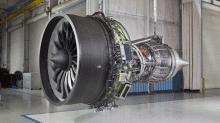There are a number of definitions for the word ‘design’. A broad definition is based on conceiving or planning something. The object of the design could be anything, a building, a park, a homestead, an electric vehicle, you name it.
Design can also include the process of fabricating the item, so all of the techniques necessary for the production of the design must be considered. The materials used for the design will also drive the requirements to make the item. Wood is very different from metal, and both materials have incredible diversity and specialization in order to get the best performance for a given design.
Design involves the underlying scheme that governs function. This aspect of design deals with intent and purpose of the candidate design. Functionality and engineering content required to achieve the purpose become another dimension to consider. In the technology world we live in, there is frequently a control requirement as well.
Design can also be the arrangement of elements and how they perform together. The process of bringing two or more parts together is integration. So when we talk about design integration we are focusing on this aspect, how the different parts come together to serve the design.
In a car, the body and the chassis are two separate systems, but they have to be designed in an integrated way because the body attaches to the chassis and the chassis supports the body. To the extent that the chassis has to support the engine, drive train and passengers as well, the chassis integration is a much more complex design activity.
In the age of 3D part manufacturing the integration process takes on a whole new meaning. 3D part fabrication gives the designer the flexibility to incorporate features that cannot be produced by machining. Hidden passages within a part, complex geometries, reinforcing features are all possible within the same process. The fluid nature of the manufacturing not only offers the design freedom, it conserves material, since there is no waste.
Our understanding of design has to be changed from the training we have based on a manufacturing world where casting and stamping processes come at very high tooling costs. Computer numerical control machining is not the only option in part fabrication.
In a recent effort GE Aviation developed a new approach to the jet fuel mixing and atomizing nozzle. The old design required 20 individual parts that are replaced today by a single 3D printed part in chrome steel. The implications of this very successful design integration is revolutionizing manufacturing.
It’s also going to require a change in our understanding of design.
